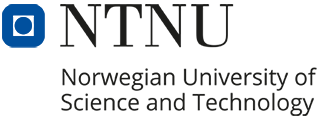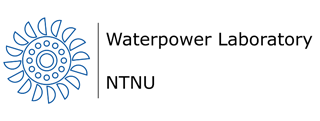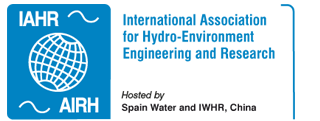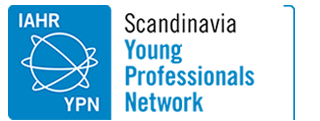Scope - IAHR 2022
Scope
Important information
As a researcher, very often, it is difficult to make distinction between some identical topics/ sections. For example, a manuscript is about the “computational fluid dynamic simulation of a Francis turbine.” The manuscript belongs to both sections ‘hydraulic turbines’ and ‘computational fluid dynamics.’ The organizing committee requests the authors to select the section appropriately, whichever suits best for the results presented in the manuscript.
The organizing committee strongly encourage the authors to use nomenclatures and abbreviations identical to IEC standards (TC4 - hydropower/turbine). This will help to maintain uniformity across the manuscripts and the international standards.
The organizing committee encourages and welcomes the original research papers and reviews on the following topics. The symposium covers all topics pertaining to hydro-mechanical equipment of a hydropower. Following are the broad topics (highly in the context of hydropower) covered in this symposium.
Topics
- Intake system
- Hydraulic turbines
- Pump-turbines
- Multiphase flow
- Vortex breakdown
- Measurement techniques and signal processing
- Computational fluid dynamics and fluid structure interaction
- Vibration and fatigue loading
- Sustainable hydropower
- Energy storage and flexibility
- Smart grid, digital twin and artificial intelligence
- Selected topics
1 Intake system
This section covers the research topic pertaining to complete intake system from inlet of the penstock to the inlet of the spiral casing. Some examples are, intake gate, trace rake, conduit, penstock, main inlet valve, water hammer, surging, surge tank, head losses, fatigue loading in the penstock, hydraulic transients, bifurcation, trifurcation junctions, etc.
2 Hydraulic turbines
This section is extremely broad and covers all components of hydraulic turbines, such as spiral casing, stay vane, guide vane, runner, blade, splitter, labyrinth seals, and draft tube. The section covers axial, radial, tangential and mixed flow turbines; high, medium, low and very low head (kinetic – ocean wave) turbines; Pelton, Francis, Kaplan, bulb, fluvial, propellor, etc. Topics such as turbine optimization, design, model tests, efficiency measurements are also included.
3 Pump-turbines
This section covers all topics related to the pump-turbines, fast transition, phenomena occur in pump mode, turbine mode, etc. Many times, centrifugal pumps are used as turbine. This section also covers the topics of centrifugal pump, its design, optimization, performance, cavitation, suction circulation, blade design, vibration, npsh, parallel/series operations, etc.
4 Multiphase flow
This section covers the broad topics, which involves two or more phases in the study (experimental and/ or numerical). Examples are cavitating flow, erosion, air injection, aeration, development of cavitation/erosion model, etc. Note - study of cavitating vortex rope is part of the section of ‘vortex breakdown’.
5 Vortex breakdown
This section covers the topics of vortex breakdown in hydraulic machinery that includes, trailing edge vortex, inter-blade vortex, draft tube vortex rope, leading edge vortex, etc.
6 Measurement techniques and signal processing
This section covers all topics which emphasizes new measurement techniques/ idea/ approaches in hydropower plant. It may be efficiency, pressure, strain, velocity and vibration. However, the focus is measurement technique and the instrumentation and not the flow phenomenon. Topic related to calibration and uncertainty quantification are covered here. This section also covers the topics of data collection and processing, new approach of data processing, data collection, development of analytical technique for large data, statistical analysis of data.
7 Computational fluid dynamics and fluid structure interaction
This section is very broad, and covers all phenomena occur in hydraulic machinery as well as solution using numerical techniques. Topics which emphasize the CFD techniques, high quality simulations (1D, 2D or 3D), 1D-3D coupling, development of numerical model, turbulence modelling, numerical verification and validation, detached eddy simulations, large eddy simulations, direct numerical simulations, etc. FSI analysis, one-way, coupled, FEA of turbine components, etc.
Note that the section is broad, and many research papers may fit in this section. However, if the focus is not numerical analysis, please select other section, which is more appropriate while submitting the paper.
8 Vibration and fatigue loading
This section covers all topics relevant to vibration, resonance, damping, modal, strain and fatigue analysis. The section also covers estimation fatigue lifetime, crack development, stress-strain measurements, fatigue analysis.
9 Sustainable hydropower
This section somewhat overlaps the topic of ‘hydraulic turbines’ however, this section focuses on sustainability and more towards development of sustainable hydraulic turbines of any head-power-discharge range. Some of the examples are fish friendly turbine design, very low head turbine with little infrastructure, easy to install, hybrid option (hydro-wind-solar) for rural applications, environment friendly design, green metals for turbine components, mini and micro hydro, innovative technology for sustainable hydro, energy efficient application, etc.
10 Energy storage and flexibility
This section covers the topic related to studies/research on energy storage in the context of hydropower, energy market, scheduling, energy management, transient operations such as load variation, start-top, load rejection, no-load, runaway. No-load and runaway are steady state operation however, both are results of transient operations and considered in this section. Energy production and management with multiple turbines, load sharing, ancillary services, load ramping, etc. are part of this topic.
11 Smart grid and digital twin
Smart grid and digital twin are somewhat different topics however, those are grouped here to avoid a long description of scope. This section covers hybrid operation of hydraulic turbines, isolated grid operation with wind-solar-hydro, other topic of smart grid that involves hydraulic turbines. Topics of hydropower digitization, automation, signal processing, monitoring and conditioning as part of digital twin, use of digital twin for the prediction of maintenance, fatigue loading, damage calculations are part of this section.
12 Selected topics
This section covers the topics, which are not included in above sections. One such example is manufacturing techniques for hydraulic turbine and components, heat treatment, prototyping, scaling, surface roughness, blade material and metallurgy, topics related to refurbishment projects, etc. It is important to note that the topics in this section must be explicitly in the context of hydropower and hydraulic machinery. Topics outside the broad scope of the symposium will not be accepted.





